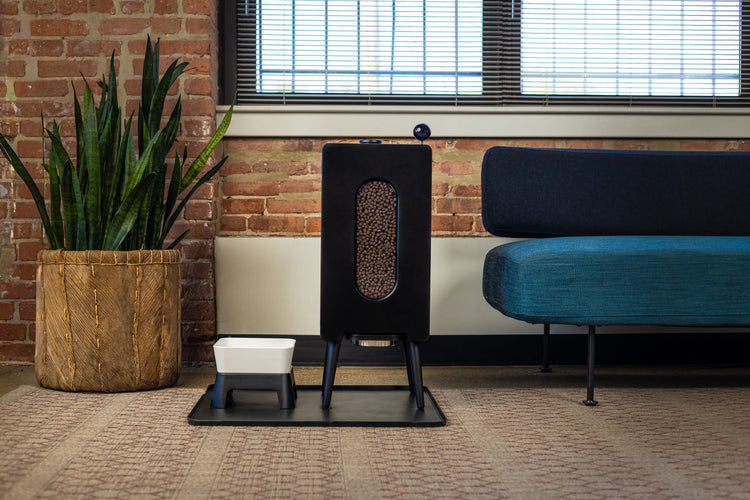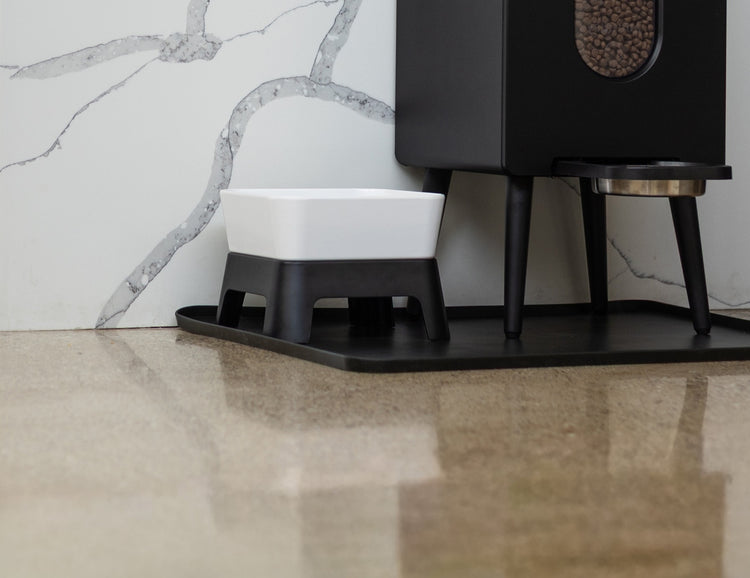Will My Dog Put on Weight After Being Spayed? Understanding the Facts and Myths
- Houndsy
Table of Contents
- Introduction
- What Happens During Spaying?
- Why Do Some Dogs Gain Weight After Spaying?
- How to Prevent Weight Gain After Spaying
- Common Myths About Spaying and Weight Gain
- Conclusion
- FAQ
Introduction
As pet owners, we often find ourselves faced with many questions regarding the health and well-being of our furry friends. One of the most common inquiries we encounter is, "Will my dog put on weight after being spayed?" This question is particularly pressing as many dog owners want to ensure that their pets maintain a healthy weight throughout their lives. Did you know that recent studies indicate that spaying or neutering can influence a dog's metabolism and activity levels? Understanding these changes is essential for all dog parents.
In this blog post, we will delve deep into the relationship between spaying, weight gain, and how to prevent unwanted pounds. We’ll explain the hormonal changes that occur after spaying, explore the implications for your dog's weight, and provide practical solutions to keep your pet healthy and active. By the end of this article, you'll have a comprehensive understanding of how you can help manage your dog's weight after spaying, allowing you to enjoy many happy and healthy years together.
Key Takeaways:
- Hormonal changes post-spay can affect metabolism and appetite.
- Dogs may gain weight after being spayed, but it is not inevitable.
- Proactive measures, such as diet and exercise adjustments, are effective in preventing weight gain.
What Happens During Spaying?
Spaying is a surgical procedure that involves removing a female dog’s ovaries and uterus. This procedure not only prevents unwanted litters but also has several health benefits, including a reduced risk of certain cancers and infections. The removal of the ovaries leads to a significant decrease in hormones like estrogen, which play a crucial role in regulating various bodily functions, including metabolism.
Hormonal Changes Post-Spay
The primary hormones affected by spaying are estrogen and progesterone, which are responsible for regulating a dog’s reproductive cycle and influencing behaviors such as aggression and territoriality. The removal of these hormones can lead to changes in behavior, metabolism, and appetite:
- Metabolism: The decrease in estrogen can slow down a dog’s metabolism, meaning they may require fewer calories to maintain their weight.
- Appetite: Some dogs experience an increase in appetite after being spayed. This can lead to overeating if their food intake isn’t adjusted accordingly.
Understanding these changes is essential in managing your dog’s weight post-surgery.
Why Do Some Dogs Gain Weight After Spaying?
While spaying itself does not directly cause weight gain, several factors contribute to the possibility of increased weight in spayed dogs:
Decreased Activity Levels
After spaying, some dogs may exhibit reduced activity levels. This can be attributed to hormonal changes that diminish the desire to roam or engage in vigorous play. Less activity means fewer calories burned, which can contribute to weight gain if their diet remains unchanged.
Increased Appetite
Changes in hormonal balance can lead to an increased appetite in some dogs. If a dog is allowed to eat freely without monitoring their food intake, this can easily result in excess calories and subsequent weight gain.
Life Stage Changes
Many dogs are spayed around the same time they transition from puppyhood to adulthood. This life stage is naturally associated with changes in metabolism and activity levels, which can make it seem like weight gain is directly related to the spay procedure when, in fact, it is just part of growing up.
How to Prevent Weight Gain After Spaying
The good news is that weight gain after spaying is not inevitable. As responsible pet owners, we can take proactive steps to ensure our dogs maintain a healthy weight post-surgery. Here are some effective strategies:
Monitor Diet
- Adjust Caloric Intake: After spaying, it’s crucial to adjust your dog’s caloric intake. Consult your veterinarian to determine the appropriate amount of food based on your dog’s new activity levels and metabolism.
- Choose Quality Food: Select high-quality dog food specifically formulated for weight management. These formulas provide balanced nutrition without excessive calories.
- Control Treats: Treats can quickly add unnecessary calories to your dog’s diet. Opt for healthy, low-calorie options like baby carrots or green beans, and limit treats to less than 10% of their daily caloric intake.
Encourage Regular Exercise
- Structured Playtime: Set aside time each day for interactive play with your dog. Activities like fetch, tug-of-war, or agility training can help keep them active and engaged.
- Daily Walks: Ensure your dog gets regular walks. Aim for at least 30 minutes of walking each day, adjusting based on your dog's size and energy level.
- Mental Stimulation: Incorporate mental exercises into your dog’s routine. Puzzle toys, training sessions, and scent games can keep their minds sharp and promote physical activity.
Regular Weigh-Ins
Weigh your dog regularly to monitor their weight and make adjustments as necessary. Keeping a record of their weight can help you identify any trends or sudden changes that may need addressing.
Common Myths About Spaying and Weight Gain
As we navigate the complexities of pet care, it’s essential to separate fact from fiction. Here are some common myths regarding spaying and weight gain:
- All Spayed Dogs Will Gain Weight: Not all dogs will gain weight after being spayed. Individual metabolism and lifestyle factors significantly impact weight.
- Spaying Changes a Dog's Personality: While hormonal changes may affect behavior temporarily, spaying does not fundamentally alter a dog’s personality.
- Weight Gain is Inevitable: With proper management of diet and exercise, weight gain can be effectively prevented.
Conclusion
Understanding the relationship between spaying and weight gain is crucial for dog owners who want to maintain their pet’s health and well-being. While there are legitimate concerns about increased appetite and decreased activity levels after spaying, these changes do not mean that weight gain is inevitable. By proactively managing your dog's diet and exercise routine, we can help them remain fit and healthy.
As responsible pet owners, we have the tools to ensure our dogs lead long, vibrant lives post-surgery. If you’re considering spaying your dog or have already done so, remember that maintaining a healthy weight is a collaborative effort between you and your furry friend.
Reflective Questions
- How has your dog's activity level changed since being spayed?
- Have you adjusted your pet’s diet post-surgery, and if so, how?
- What strategies do you plan to implement to keep your dog active and healthy?
For a seamless and enjoyable feeding experience, consider exploring the Houndsy Kibble Dispenser. Our innovative design promotes portion control and enhances the daily feeding ritual, making it easier to maintain your dog's health.
FAQ
Will spaying always cause my dog to gain weight?
Not necessarily. While hormonal changes can lead to weight gain, it is often manageable through diet and exercise adjustments.
How can I tell if my dog is overweight?
A healthy dog should have a visible waist and ribs that can be felt without pressing hard. Regular veterinary check-ups can also help determine your dog’s weight status.
What should I do if my dog starts gaining weight after being spayed?
If you notice weight gain, consult your veterinarian to adjust your dog’s diet and exercise plan accordingly.
Can I give my dog treats after spaying?
Yes, but be mindful of the calories in treats and ensure they make up no more than 10% of your dog's daily caloric intake.
How often should I exercise my dog after spaying?
Aim for at least 30 minutes of moderate exercise each day, adjusting based on your dog’s size, age, and energy level.
By understanding the impacts of spaying and taking proactive measures, we can ensure our furry companions remain healthy and happy. Let us embrace our role in their wellness journey!












